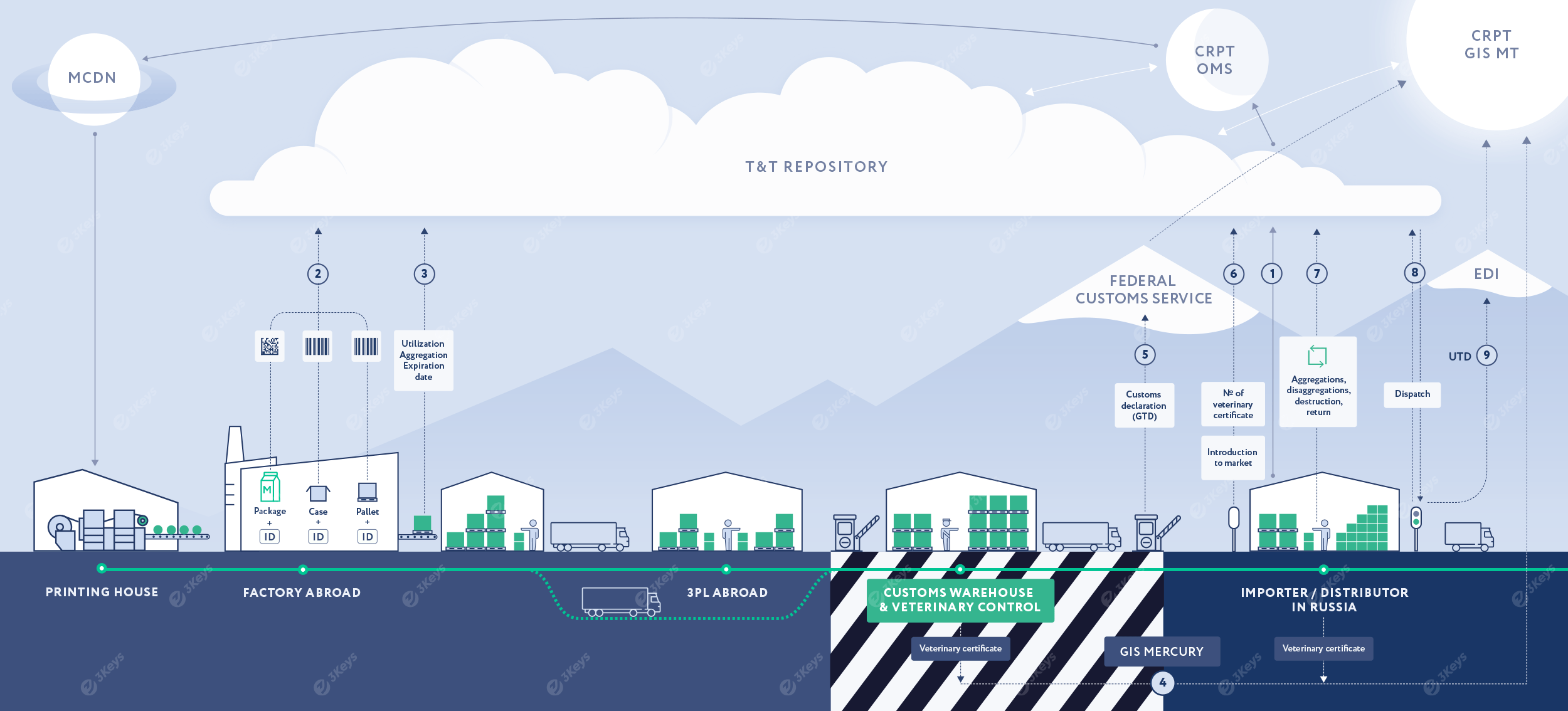2021 January 20—the start of serialisation for dairy.
Manufacturers, importers, wholesalers, and retailers can voluntarily serialise, introduce to the market, and record the sale of dairy products to end-consumers through POS registers.
2021 June 1—mandatory serialisation for ice cream (except icecream w/o milk fat and/or milk protein) and cheese.
Cheese and ice cream manufacturers must be registered in the Chestny Znak system and describe their products in the National Catalog. By this time, the processes for ordering and payment for codes, as well as code application on the package and introduction to the market, including reporting, should be fully implemented.
2021 September 1—mandatory serialisation for other dairy products with an expiration date of more than 40 days.
Manufacturers of dairy products with an expiration date of more than 40 days must be registered in the Chestny Znak system and describe their products in the National Catalog. By this time, the processes for ordering and payment for codes, as well as code application on the package and introduction to the market, including reporting, should be fully implemented.
2021 December 1—mandatory serialisation for other dairy products with an expiration date of less than 40 days.
Manufacturers of dairy products with an expiration date of less than 40 days must be registered in the Chestny Znak system and describe their products in the Nacionalnyy Catalog. By this time, the processes for ordering and payment for codes, as well as code application on the package and introduction to the market, including reporting, should be fully implemented.
2022 September 1—mandatory reporting of sales information for dairy products with an expiration date of less than 40 days.
Retail stores that sell any dairy products must start scanning codes and report sales information to the GIS MT system via registers. By this time, sales processes must be tested, 2D scanners must be available at cash registers, and cash register software should be upgraded if necessary.
2022 September 1—volume-varietal accounting is introduced.
For all participants in the turnover (except for the HoReCa segment and farmers), volume-article accounting is introduced, and it also becomes mandatory to transfer information about the withdrawal of products from circulation in the form of volume-varietal accounting.
Manufacturer, importer, wholesaler, retailer – Participants need to set up electronic document management. It is now necessary to transfer information to the system about the delivery of goods (information about the product code and the quantity of marked goods shipped), without indicating the marking codes that are transferred between owners.
2023 December 1—mandatory reporting for the HoReCa segment and government agencies.
It becomes mandatory to transfer information to the labeling system on the turnover and disposal of dairy products for the HoReCa segment and government agencies.
From this date, HoReCa segment and government agencies must submit to the information monitoring system information on the turnover and withdrawal from circulation of the indicated dairy products.
Manufacturer – by this time, the processes for ordering codes, applying them to goods with submitting a report on applying, paying for codes and putting them into circulation should be fully configured, and registration in the labeling system should be implemented. In addition, farmers must submit information to the labeling system about the circulation of dairy products and their withdrawal from circulation.
2025 June 1 – piece-by-piece accounting is introduced for products with a shelf life of more than 40 days, and for all participants in the turnover. It is also becomes obligatory to transfer information about the withdrawal of products from circulation.
For all participants in the turnover, it is introduced to transfer to the system information about the withdrawal of products from circulation for all reasons other than sales by CCP, in the form of piece-by-piece accounting – an indication of the product code and the quantity of the withdrawn goods, indicating specific units of the marked goods.

